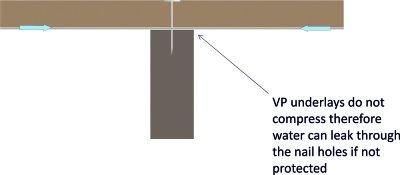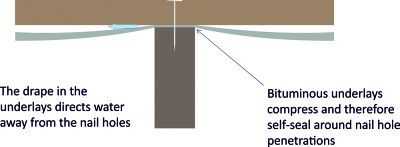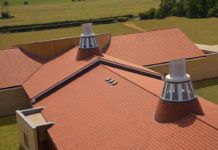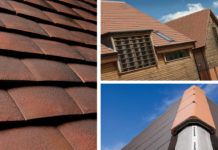

In a previous article, I dealt with an issue directly related to changes brought about through the introduction of the British Standard for slating and tiling: BS 5534: 2014. In this article, I will discuss another source of confusion; i.e the use of vapour permeable (VP) underlays.
Vapour permeable underlays, often referred to as ‘breather’ underlays or membranes, have been used in construction in Europe since the 1970s and were first certified by BBA in 1982 for use as sheathing membranes in timber frame buildings and for use in tiled or slated ventilated cold roof construction.
Despite the now widespread use of VP underlays in the UK, there is still confusion surrounding the control of condensation in roof spaces and even the initial installation process continues to cause issues. In this article, I will deal with the installation.
It is perhaps worth reminding ourselves that in traditional ‘English’ cold roof construction, the underlay is laid directly over the rafters. This was fine for traditional bituminous underlays; by their very nature, they are heavy and tend to sag or drape, naturally between the rafters. Even if the roofer laid the underlay without any drape – which would be difficult to do – it would tend to sag where it is unsupported between the rafters, during warm weather.
Underlay drape is important because this creates a gap between the underlay and tile battens to allow any water that gets into the batten cavity to drain away safely to the gutters. Another feature of bituminous underlay is its ability to ‘self-seal’ around nail penetrations and to compress where the tile battens are fixed through it into the rafters. In summary, the drape and the sealed nail holes mean that bituminous underlays are naturally watertight.
The difficulty we now find is when we install VP underlays in the same way as bituminous underlays. In mainland Europe, roof construction is different from ours and better suited to the lighter, VP underlays. Firstly, the underlay is fully supported on rigid sarking or insulation. Secondly, counter-battens are fixed over the underlay to create space for water drainage between the underlay and tile or slate battens. Thirdly, nail tape is commonly used between the counter-battens and underlay to seal the nail penetrations.
In English cold roof construction, we must lay the underlay over the rafters with sufficient drape to allow water drainage. VP underlays are much lighter in weight than bituminous underlays, therefore laying them with a drape can be problematic; for example, during windy conditions, the roofers will tend to hold the underlay down tight whilst battens are fixed to restrain it. This can result in the underlay being ‘tight as a drum’ with no drape whatsoever. This will then trap water behind the battens. Because VP underlay does not compress around the tile battens or self-seal around nail holes, any water trapped behind the tile battens will then find its way through the nail penetrations.
The latest version of BS 5534 refers to a ‘nominal 10mm’ drape, which in itself is causing confusion. In practical terms, the underlay drape needs to be just enough to allow water to pass; too much drape and the underlay may flap or drum in windy conditions, causing noise and in extreme cases, excessive drape may enable the underlay to extend far enough to lift the roof tiles.
An option if it is difficult to lay the underlay with a drape, is to install counter-battens over the underlay, fixed into the rafters. These only need to be deep enough to allow water to pass underneath and to ensure a watertight seal around nail penetrations, nail tape can be installed under the counter-balances.
Another source of confusion when installing underlay is regarding the taping of laps. It has always been a requirement to restrain horizontal laps in the underlay to prevent flapping in windy conditions. The traditional method was to fix an extra batten between the tile battens, but this could be a potential trip hazard, therefore the better option is to either increase the lap to coincide with a tile batten, or restrain the lap using tape. However, this is not to be confused with taping – or otherwise sealing – the laps to improve the wind load resistance of the underlay. BS 5534 now has a methodology for determining what the wind load resistance of the underlay needs to be for any given site.
The underlay supplier will advise how to achieve the required wind load resistance; for example, the appropriate type of underlay and when to tape the laps.
Ultimately, the underlay provides two vital functions: i.e it bears a significant proportion of the wind load on a roof and it acts as a dust and watertight barrier. Therefore, it is important to use an appropriate underlay, with taped laps if necessary, to resist wind loads and, when installing the underlay, care must be taken to ensure that water can be discharged to the gutters and that all junctions and penetrations are protected against the risk of water ingress.





